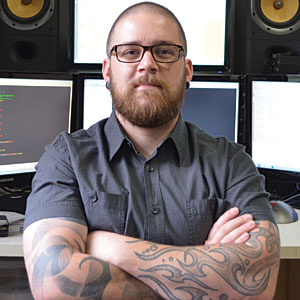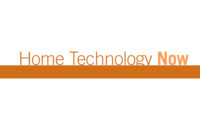
|
Have you ever had a client ask if you could set up a control system for other areas in the house? It’s a growing market, so if you have not been asked about control options yet, chances are you will be asked at some point. As a security professional you have an upper hand: you already have the trust of the client and are providing a service that makes them feel safe. When you think about integrating all of the sub-systems in a house your first question always will be, “How am I going to control that?” and it can be an intimidating question if you don’t know what your options are as an installer.
One fact to remember is that control systems, large and small, are all using the same forms of communication to bring all of these sub-systems together. Those forms include infared (IR), radio frequencies (RF), RS232/422/485 and Ethernet. Understanding these forms of communication will give you the ability to pick a product that you feel you can make work for your client.
Your next question will be, “How do I want to integrate these subsystems?” and that is where picking a control system comes into play.
There are many control systems manufacturers in the marketplace and recently, with the price of high-performance microchips at all-time lows, there are more options than ever before. You probably have seen already some security systems incorporating lighting, HVAC and even CCTV. If you want to venture out of the norm or if you feel those systems just don’t offer your clients what they want, then you have many options.
Let’s start with the most basic of options — ones that don’t require any programming, just configuration. There are varied companies that can give you a portal (application) to connect to the subsystem from a mobile device. This can be a quick and easy option for simple integration of each of the separate systems. The downside is that these apps can clutter up your clients’ mobile devices and will require switching back and forth between them — not the most seamless user experience. On the positive side, if you can walk through configurations wizards, then you can set up these systems.
Some of the newer, smaller control systems are compact one-purpose “black boxes” that use Web interfaces to program and setup, so the learning curve for you as an installer is minimal. Installation is quick and easy, but you will need a strong network for these devices to be on so they can communicate with each other. These types of systems are a great starting point and allow for decent control without much investment or risk.
The larger control system manufacturers will give you the ability to control and automate the world, but they do require dealership status. Springing for this status can prove beneficial as manufacturers usually only allow a small number of companies in one area to hold that status and offer great price points for higher profit margins.
Systems of this scale provide a unique experience to clients. They range in size (4 in. to 20 in.), offer customized user interfaces, and allow for video and intercom as well as the ability to communicate with nearly every device in the house. Larger systems have to be programmed by someone; you could opt to have someone on staff take training or outsource that work to an independent programming firm. These systems usually also require a very robust network, some to the level of enterprise networks, so advanced training on networking including wireless is highly recommended. Are you seeing a theme here with the importance of the network?
Overall, getting into the control systems/integration field is not as difficult and scary as you may think. With some training and research, you can be successful in one of the fastest growing markets in residential technology. CEDIA offers training on control systems, the network, and more. Find training in your area or online at www.cedia.net/training.
Ian Bryant is co-owner of Simplified Concepts, a tech services company offering programming, installation, design and engineering with offices in Indianapolis, Detroit and Grand Rapids, Mich. His qualifications include Crestron Silver Master Certified Programmer, AMX ACE Programmer, BIAMP and BSS Audio Certified, as well as ISF and HAA Certified.


